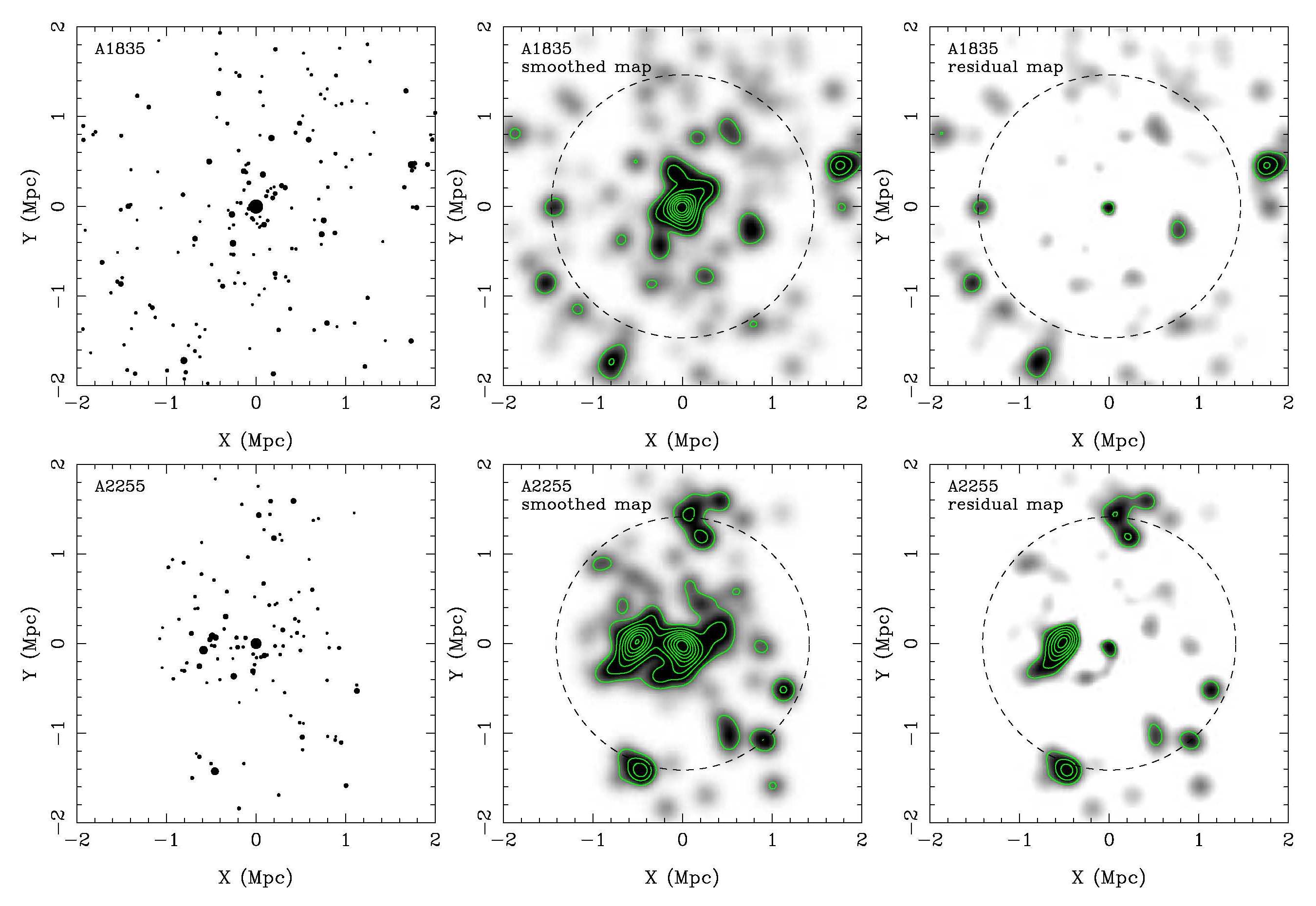
| |||||
Dynamical state of galaxy clusters is closely related to their
observational properties in X-ray, optical and radio wavelengths. We
developed a method to diagnose the substructure and dynamical state of
galaxy clusters by using photometric data of SDSS. To trace mass
distribution, the brightness distribution of member galaxies is
smoothed by using a Gaussian kernel with a weight of their optical
luminosities. After deriving the asymmetry, the ridge flatness and the
normalized deviation of the smoothed optical map, we defined a
relaxation parameter, Γ, to quantify dynamical state of clusters. This
method is applied to a test sample of 98 clusters of 0.05<z≤0.42
collected from literature with known dynamical states and can
recognize dynamical state for relaxed (Γ≥0) and unrelaxed (Γ<0)
clusters with a success rate of 94 per cent. We then calculated
relaxation parameters of 2092 rich clusters previously identified from
the SDSS, of which 28 per cent clusters are dynamically relaxed with Γ
≥0. We found that the dominance and absolute magnitude of the
brightest cluster galaxies closely correlate with dynamical states of
clusters. The emission power of radio haloes is quantitatively related
to cluster dynamical state, beside the known dependence on the X-ray
luminosity.

| |||||

|

| ||||||
By using the bright member galaxies of a large sample of rich clusters identified from the SDSS, we obtained the bright end of composite luminosity functions of cluster galaxies, and studied their dependence on cluster dynamical states. After a redshift-evolution correction of absolute magnitude, the luminosity function of member galaxies can be well fitted by a Schechter function when the brightest cluster galaxies (BCGs) are excluded. The absolute magnitudes of BCGs follow a Gaussian function with a characteristic width of about 0.36 mag. We found that the luminosity function of galaxies in more relaxed clusters has a fainter characteristic absolute magnitude (M*), and these clusters have fewer bright non-BCG member galaxies but a brighter BCG. Our results suggest the co-evolution of galaxy population with cluster dynamical state and support the hierarchical formation scenario of the BCGs.
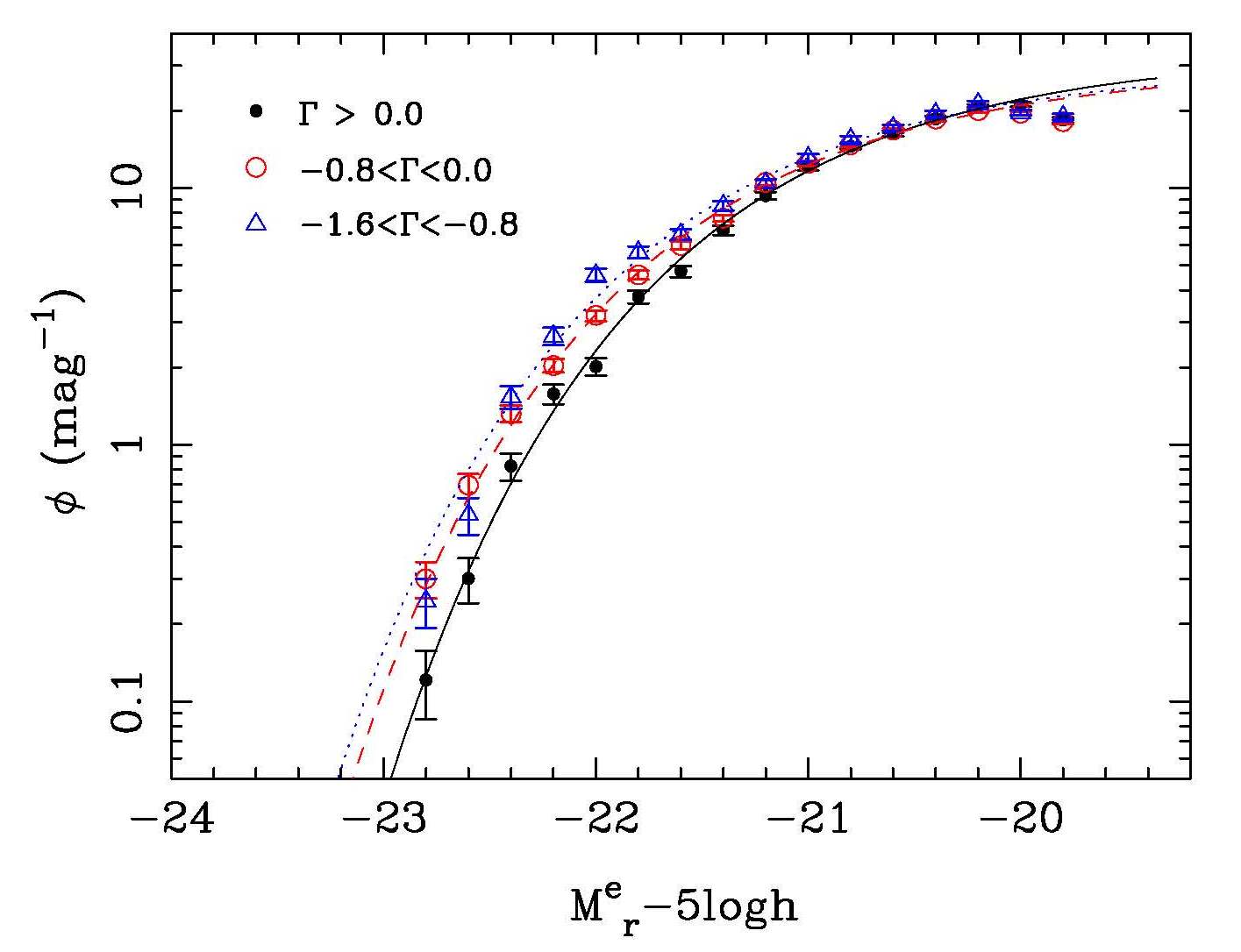
|

|
|||||
Diffuse radio emission in galaxy clusters is known to be related to cluster mass and cluster dynamical state. We collected the observed fluxes of radio halos, relics, and mini-halos for a sample of galaxy clusters from the literature, and calculated their radio powers. We then obtained the values of cluster mass or mass proxies from previous observations, and also obtained the various dynamical parameters of these galaxy clusters from optical and X-ray data. The radio powers of relics, halos, and mini-halos are correlated with the cluster masses or mass proxies, as found by previous authors, while the correlations concerning giant radio halos are in general the strongest. We found that the inclusion of dynamical parameters as the third dimension can significantly reduce the data scatter for the scaling relations, especially for radio halos. We therefore conclude that the substructures in X-ray images of galaxy clusters and the irregular distributions of optical brightness of member galaxies can be used to quantitatively characterize the shock waves and turbulence in the intracluster medium responsible for re-accelerating particles to generate the observed diffuse radio emission. The power of radio halos and relics is correlated with cluster mass proxies and dynamical parameters in the form of a fundamental plane.
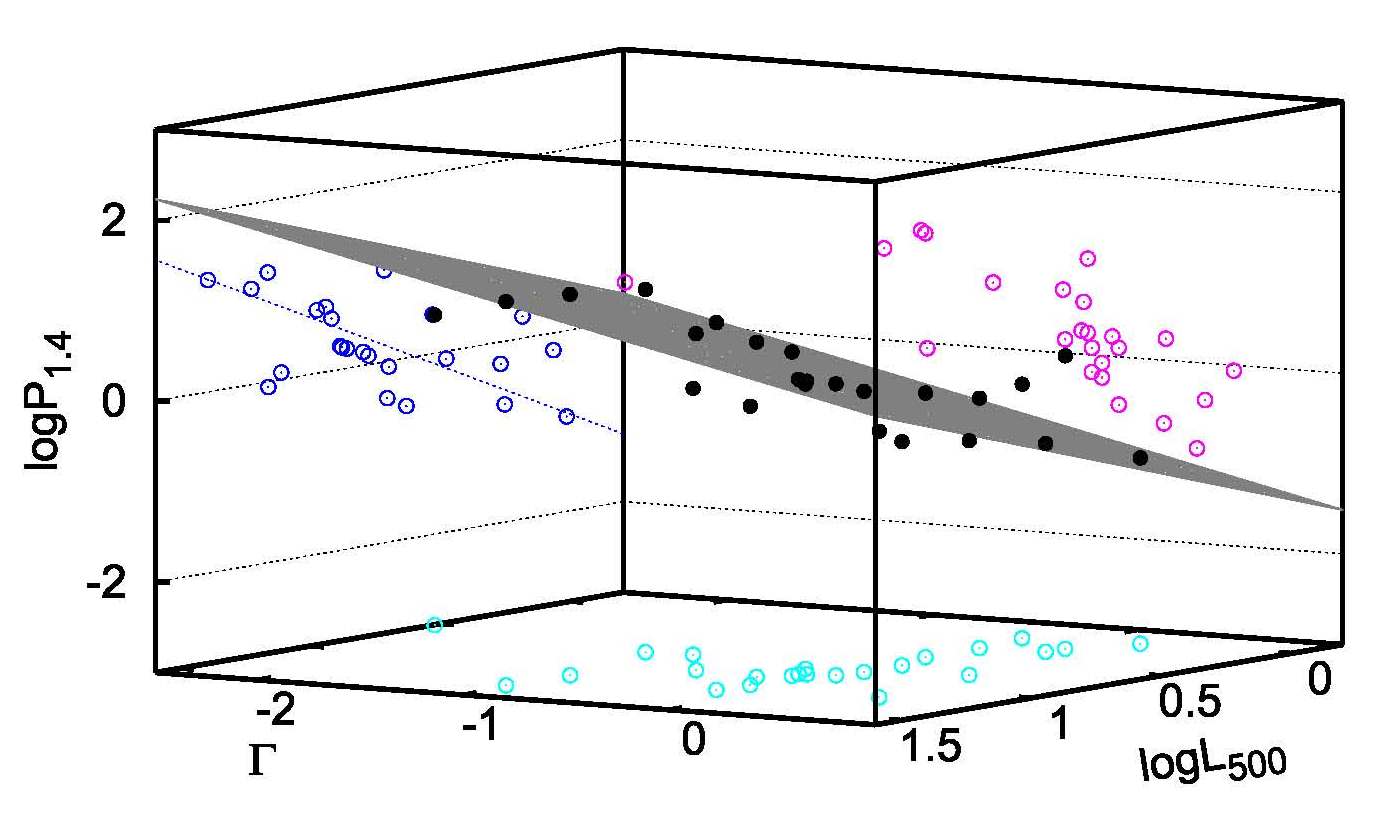
|
|||||
By cross-matching the currently largest optical catalogue of galaxy clusters and the NVSS radio survey database, we obtained a large complete sample of BCGs in the redshift range of 0.05<z≤0.45, which have radio emission and redshift information. We confirmed that more powerful radio BCGs tend to be these optically very bright galaxies located in more relaxed clusters. We derived the radio luminosity functions of the largest sample of radio BCGs, and found that the functions depend on the optical luminosity of BCGs and the dynamic state of galaxy clusters. However, the radio luminosity function does not show significant evolution with redshift.

|
|||||
The mass function of galaxy clusters is a powerful tool to constrain cosmological parameters, e.g. the mass fluctuation on the scale of 8 h-1 Mpc, σ8, and the abundance of total matter, Ωm. We first determined the scaling relations between cluster mass and cluster richness, summed r-band luminosity and the global galaxy number within a cluster radius. These relations are then used to two complete volume-limited rich cluster samples which we obtained from the SDSS. We estimated the masses of these clusters and determined the cluster mass function. Fitting the data with a theoretical expression, we got the cosmological parameter constraints in the form of σ8(Ωm/0.3)α = β and found out the parameters of α = 0.40-0.50 and β = 0.8-0.9, so that σ8 = 0.8-0.9 if Ωm = 0.3.
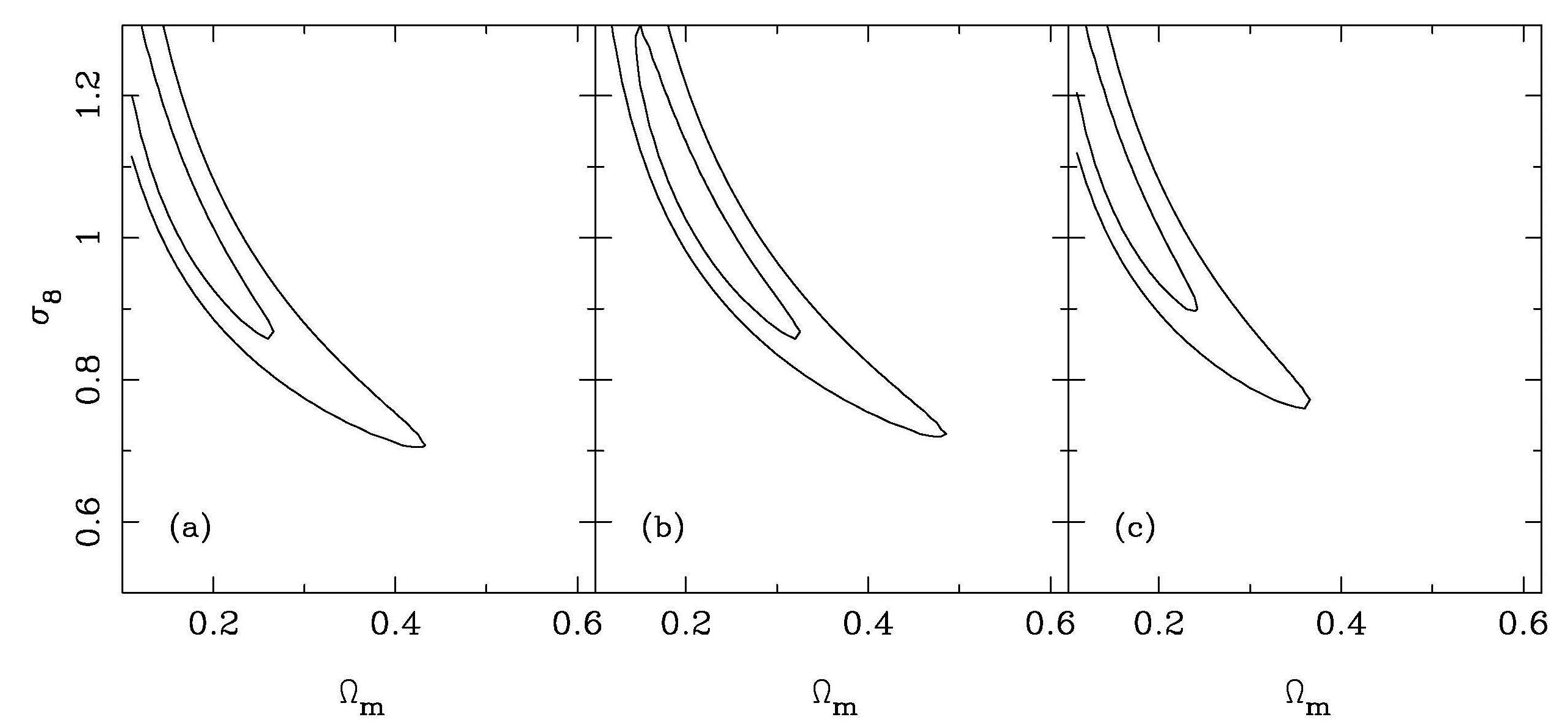
|
|||||
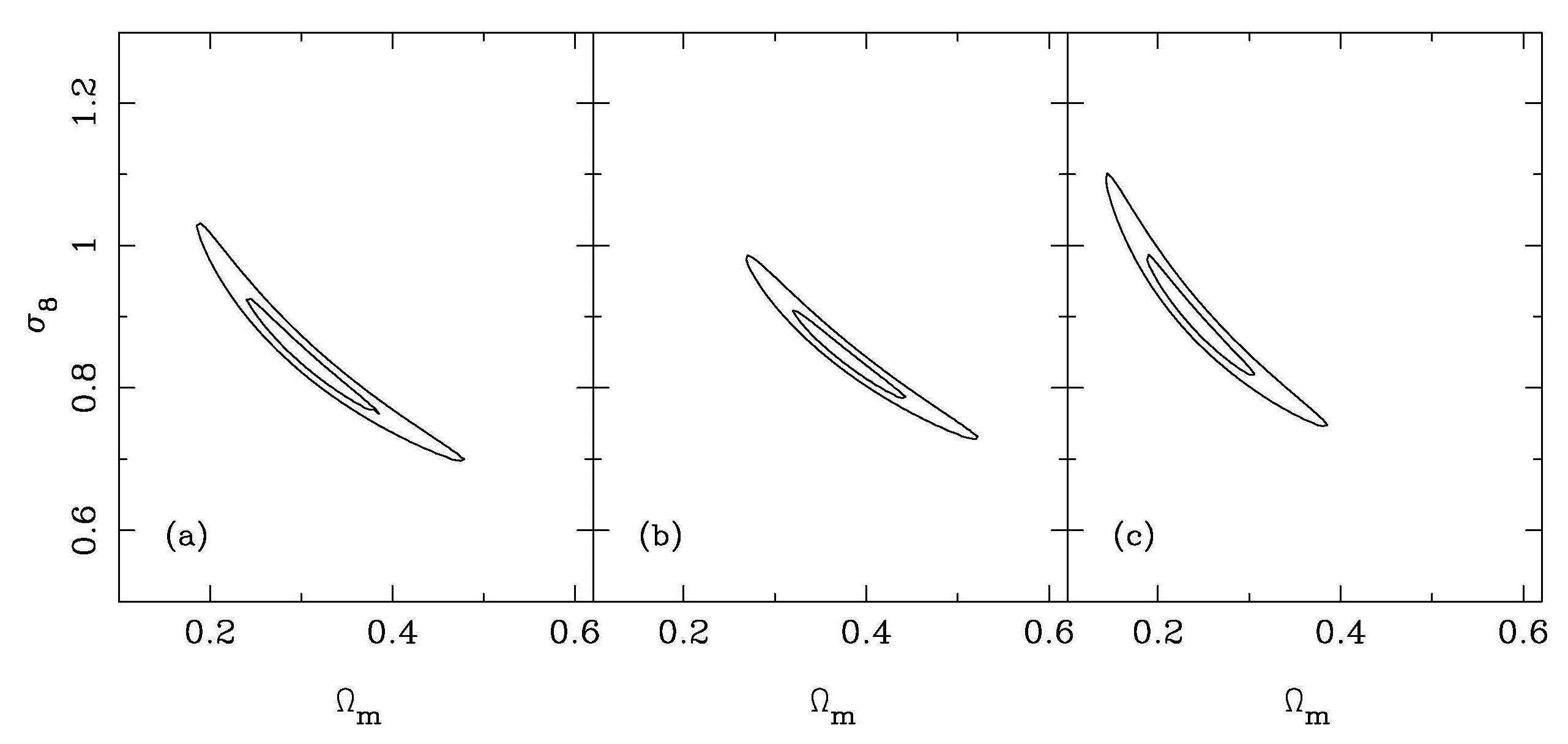
| |||||
We published two papers on the spatial distribution of clusters, which is another tool to constrain cosmological parameters. In 2012, we calculated the correlation function of 13,904 galaxy clusters of z≤0.4 selected from the WHL09 cluster catalog. The correlation function can be fitted with a power-law model ξ(r) = (r/R0)-γ on the scales of 10 h-1 Mpc <= r <= 50 h-1 Mpc with a power-law index of γ = 2.1. A pronounced baryon acoustic oscillations (BAO) peak is detected at r ~ 110 h-1 Mpc with a significance of ~1.9σ. Later in 2016, We calculated the correlation function of 79,091 galaxy clusters in the redshift region of z≤0.5, selected from the WH15 cluster catalog. With a weight of cluster mass, a significant baryon acoustic oscillation (BAO) peak is detected on the correlation function with a significance of 3.7σ. By fitting the correlation function with a ΛCDM model, we found the constraint of cosmological parameter is consistent with that of the Planck 2015.

|
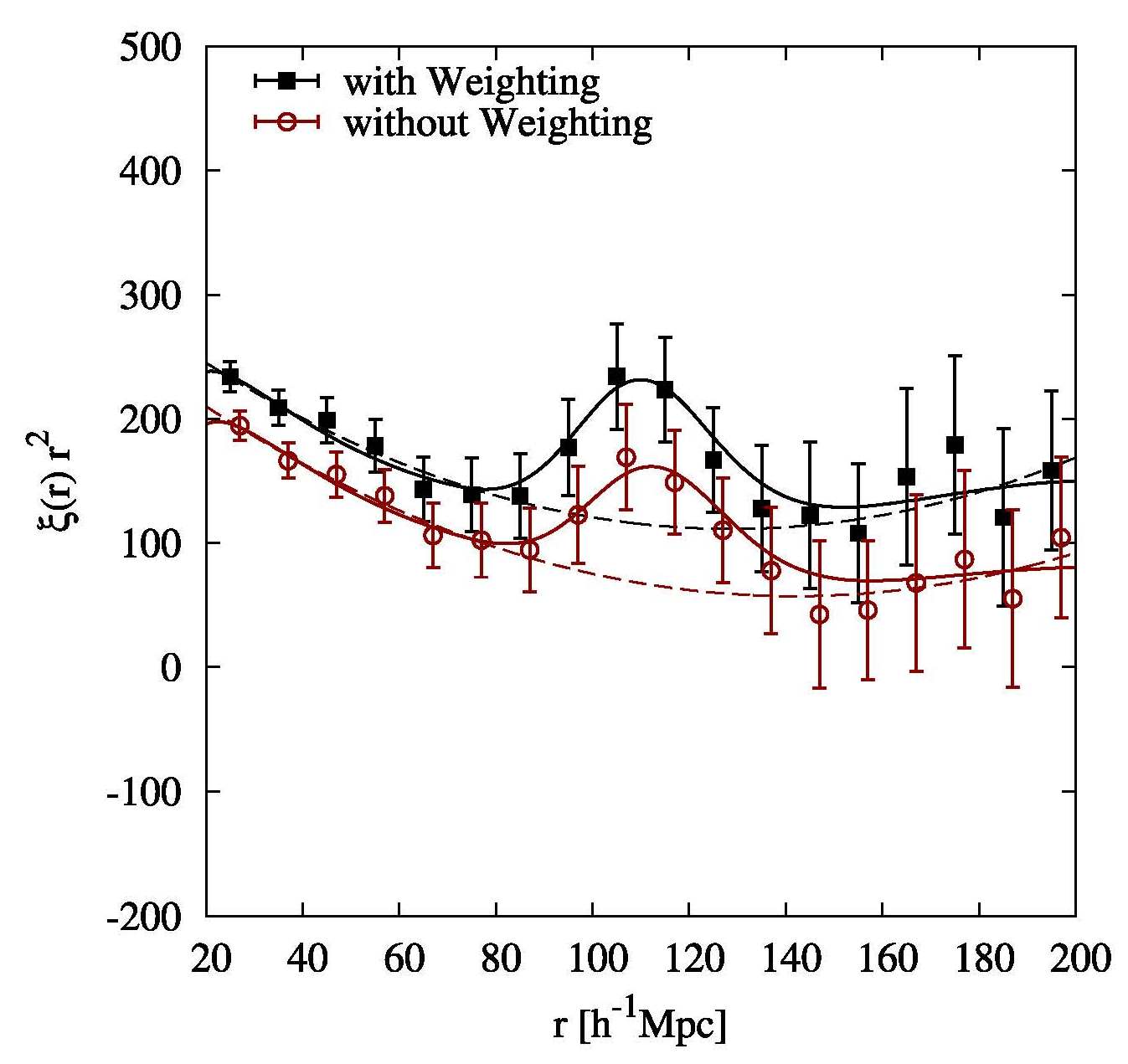
| |||||
These are the side products of our works on identification of galaxy clusters. Galaxy clusters are the most gravitational lenses in the universe and the strong lensing clusters are relatively rare. By visual inspection of the SDSS color images, we found 13 strong lensing systems from 39,668 WHL09 clusters in 2009, of which 12 have been spectroscopically confirmed later. In 2011, we found 68 strong lensing systems by visual inspection of SDSS color images of 132,684 WHL12 clusters. In 2014, we found another 17 strong lensing systems. Furthermore, we found that richer clusters have a higher probability as strong lenses.
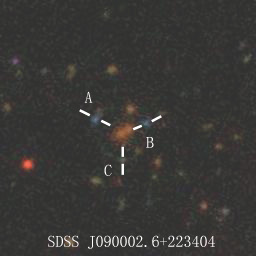
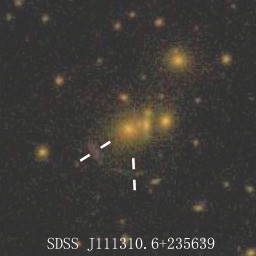
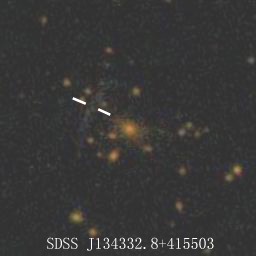
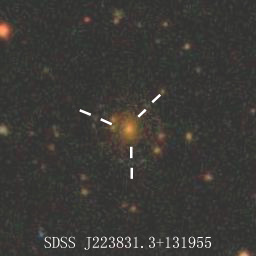
| |||||
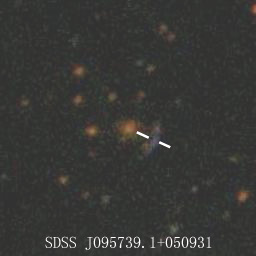
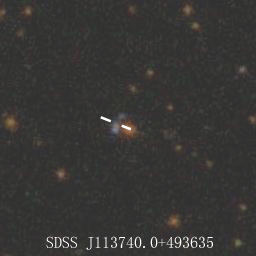
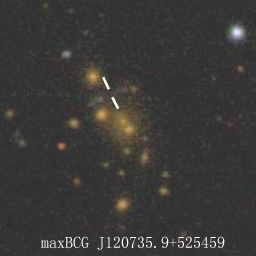
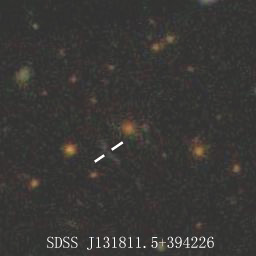
| |||||
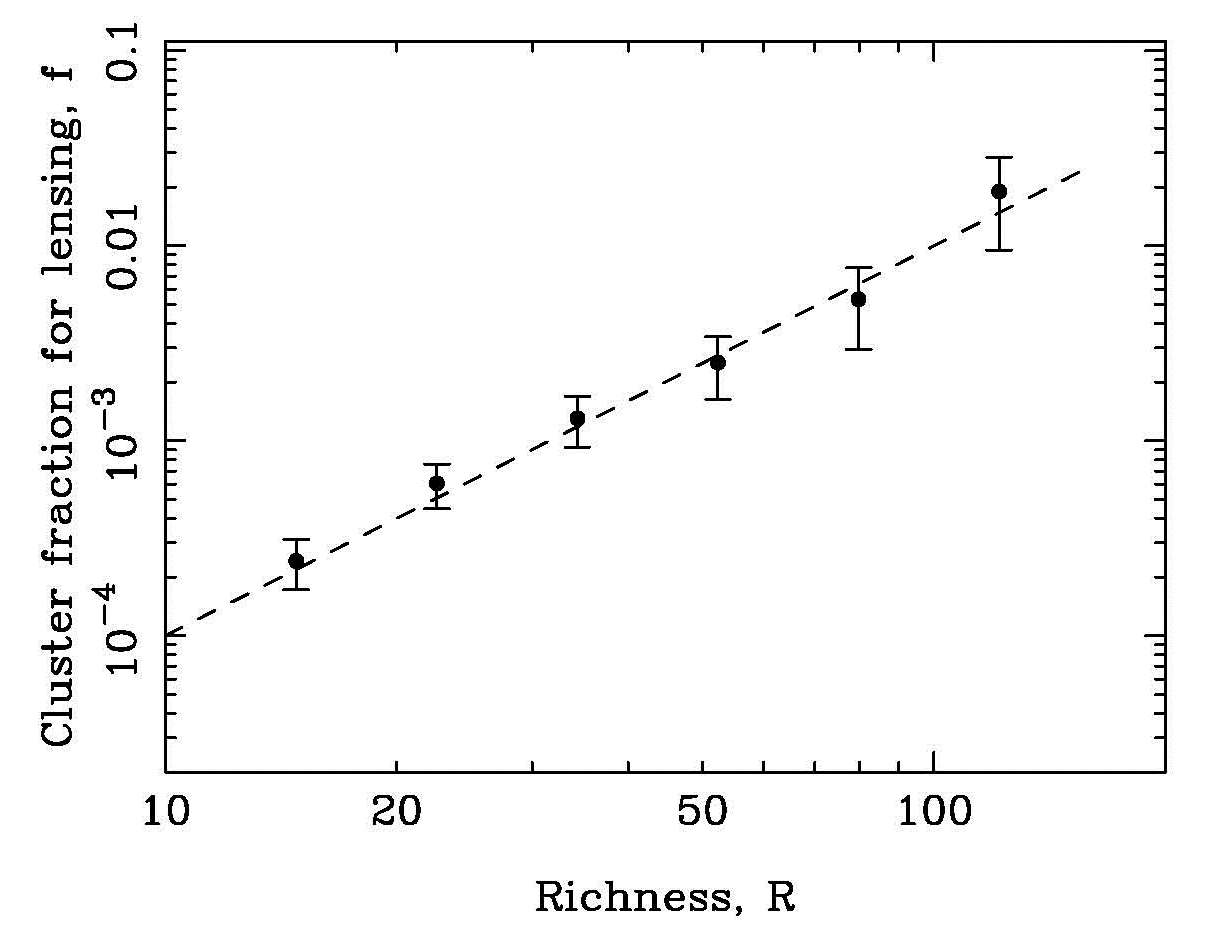
|
|||||